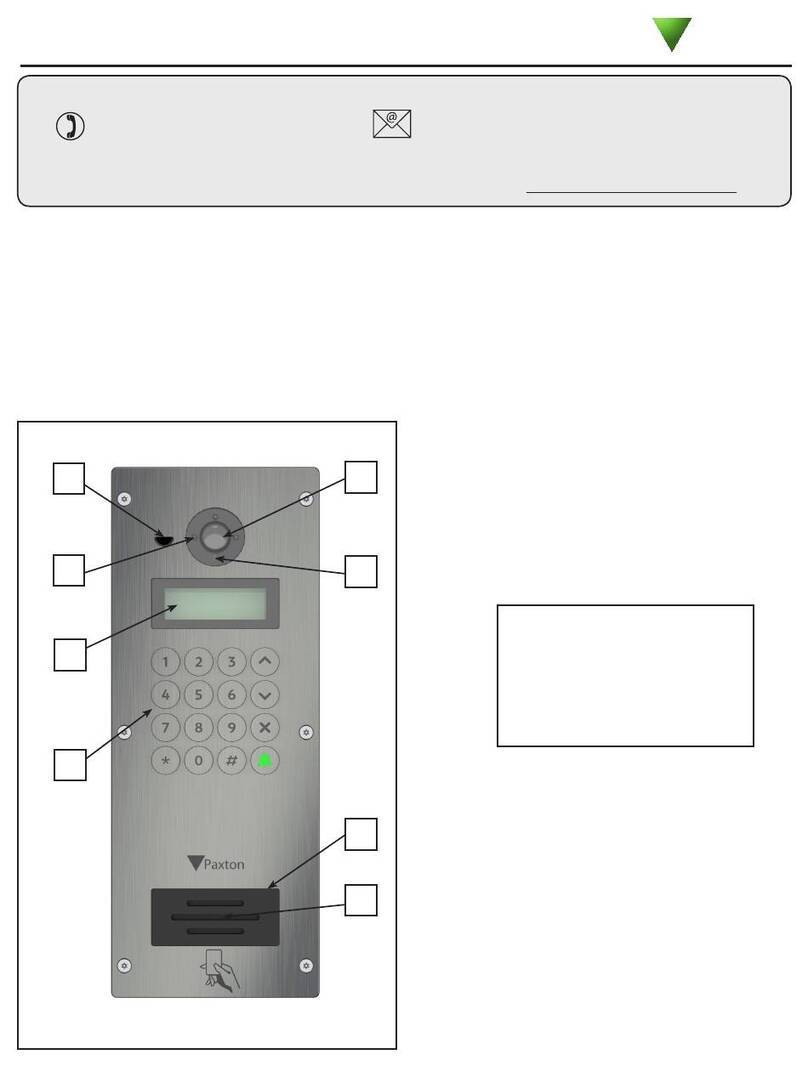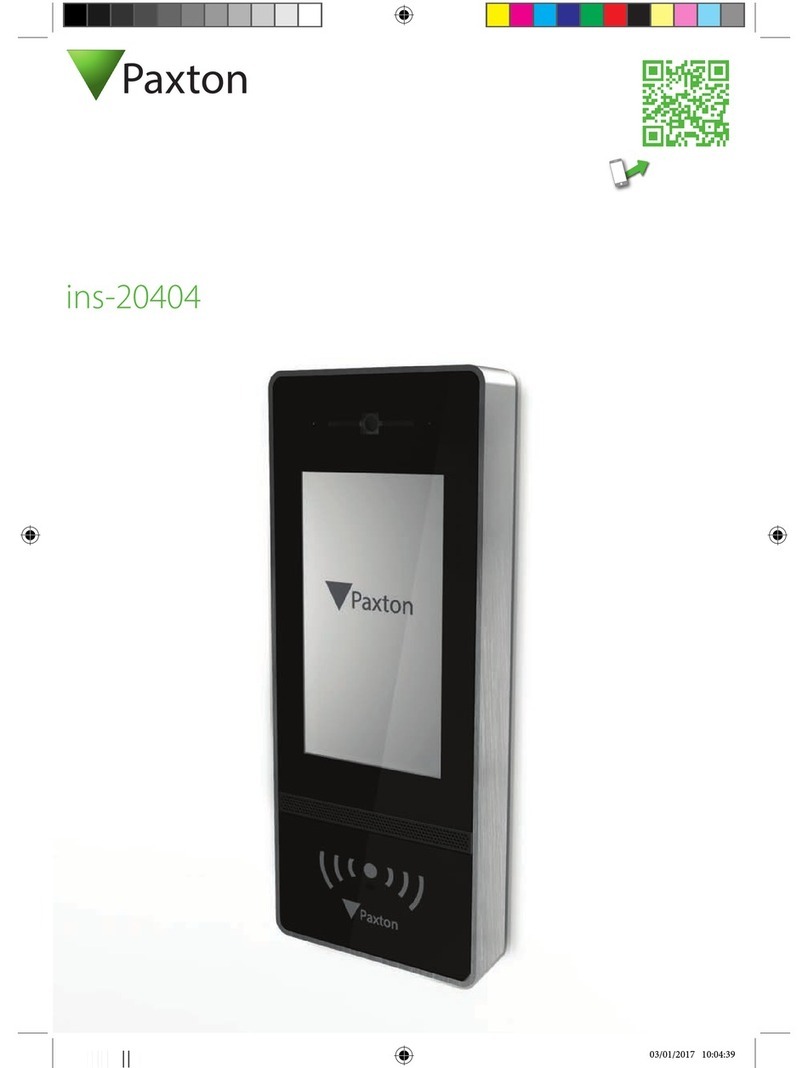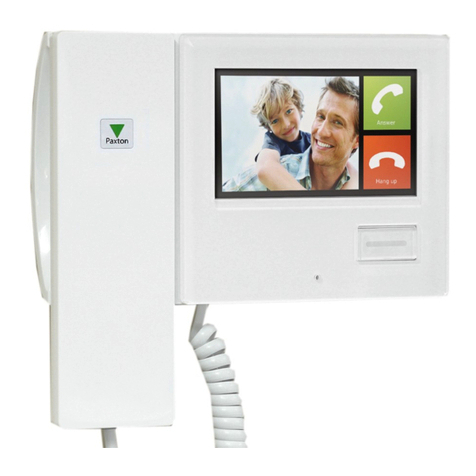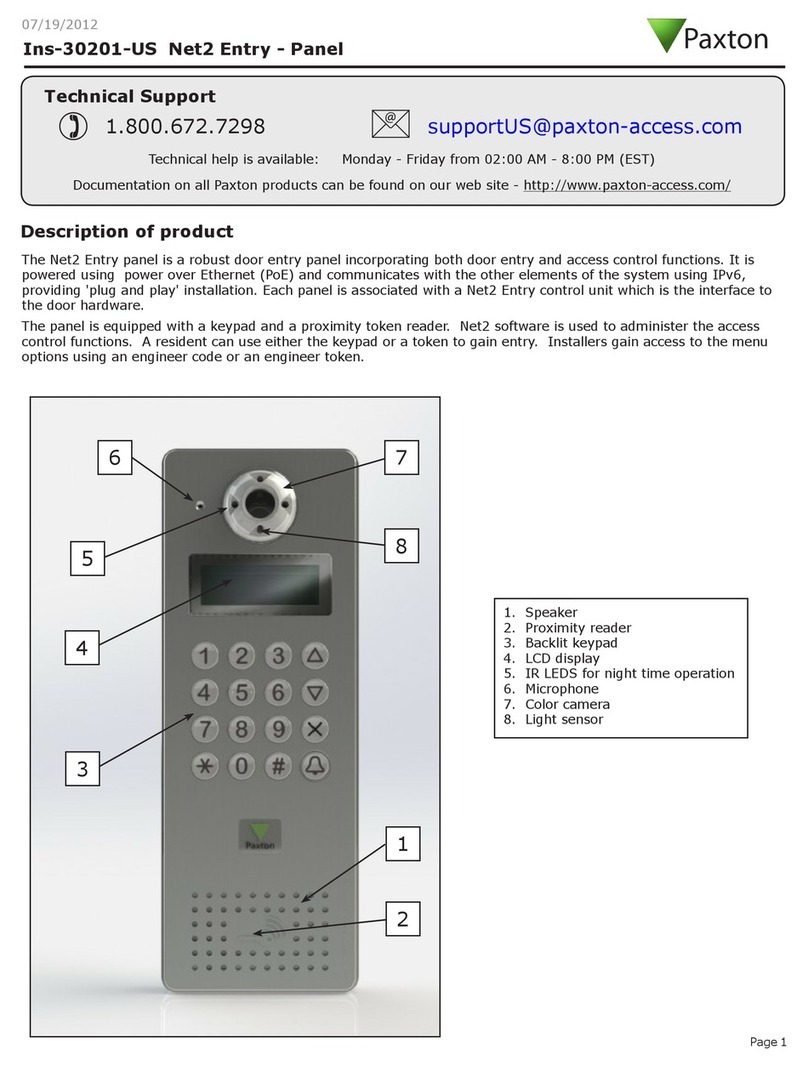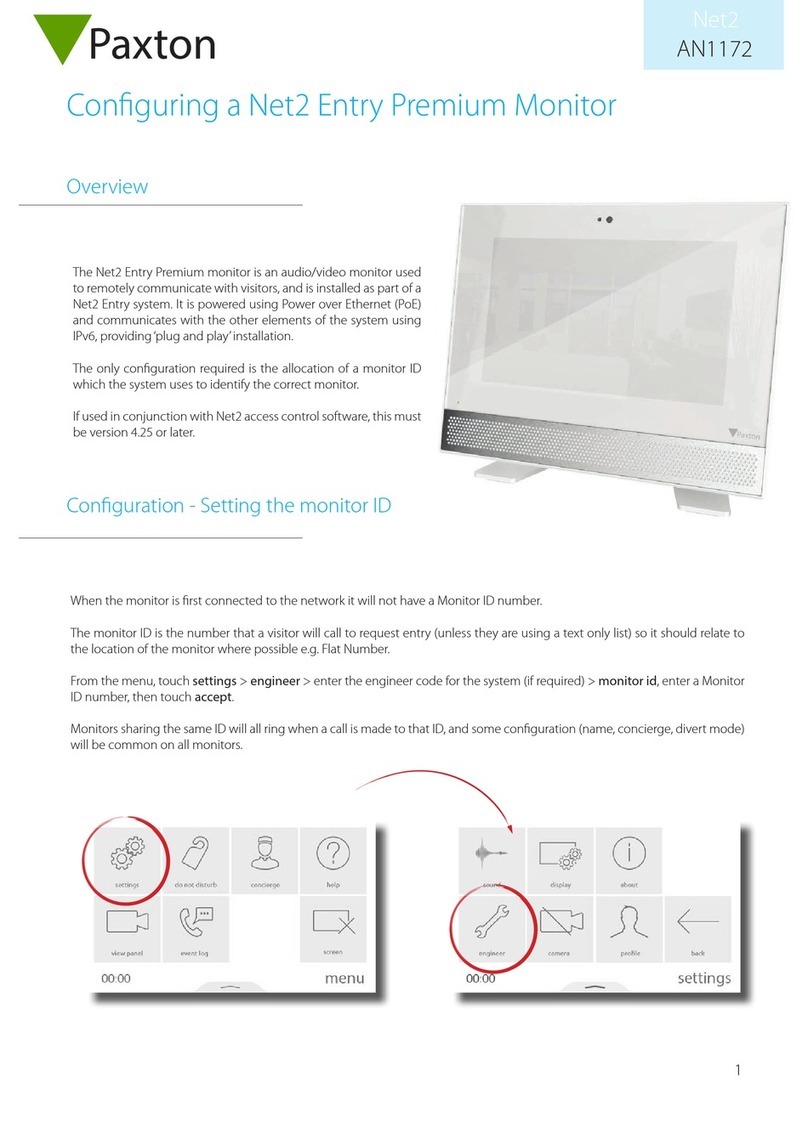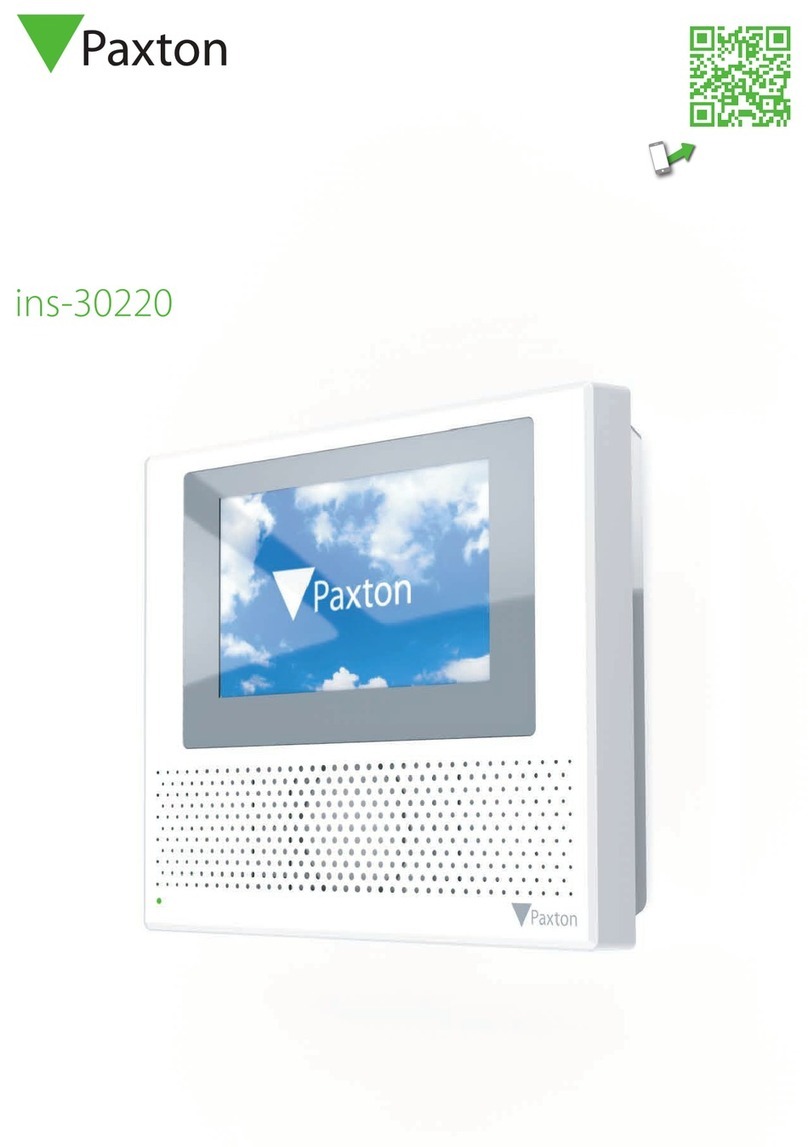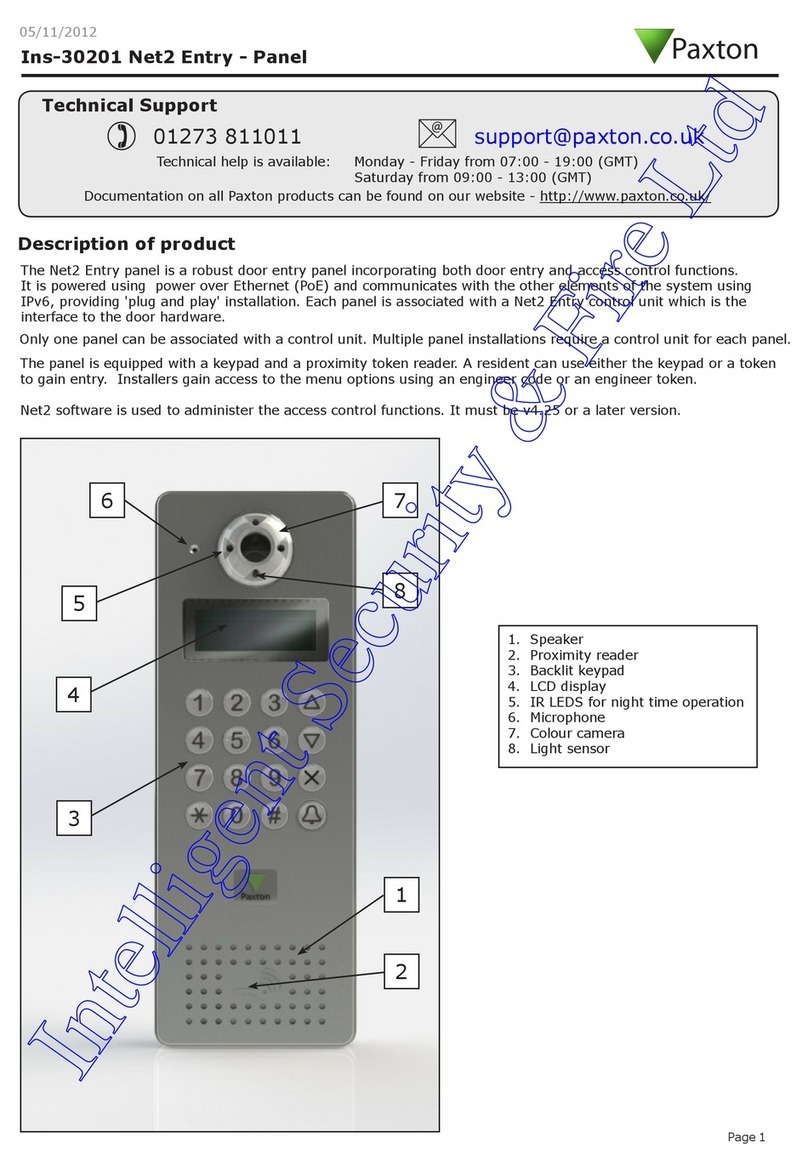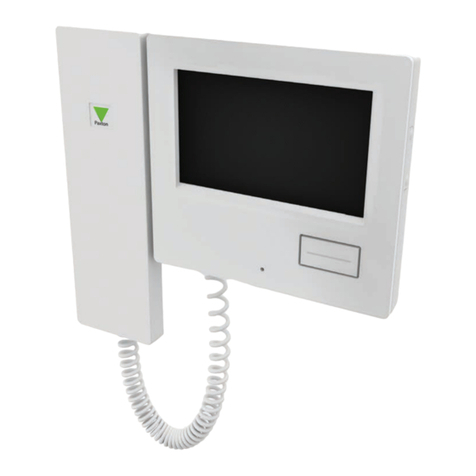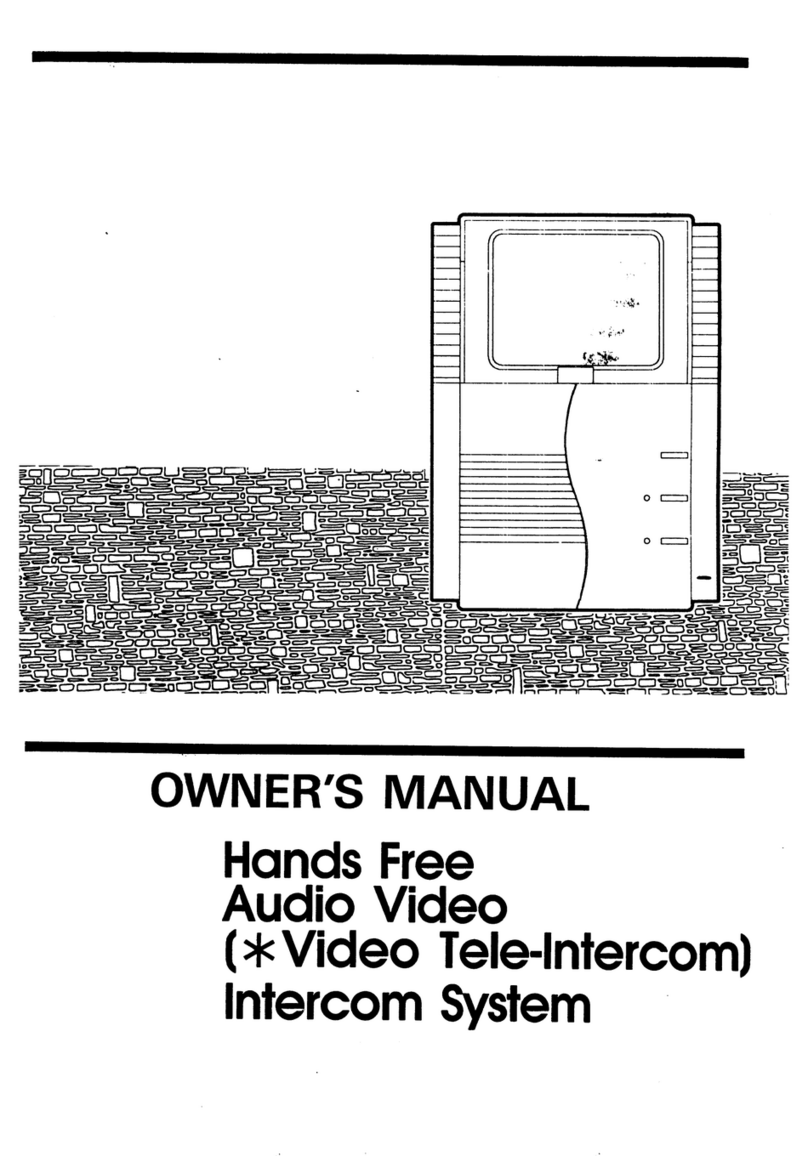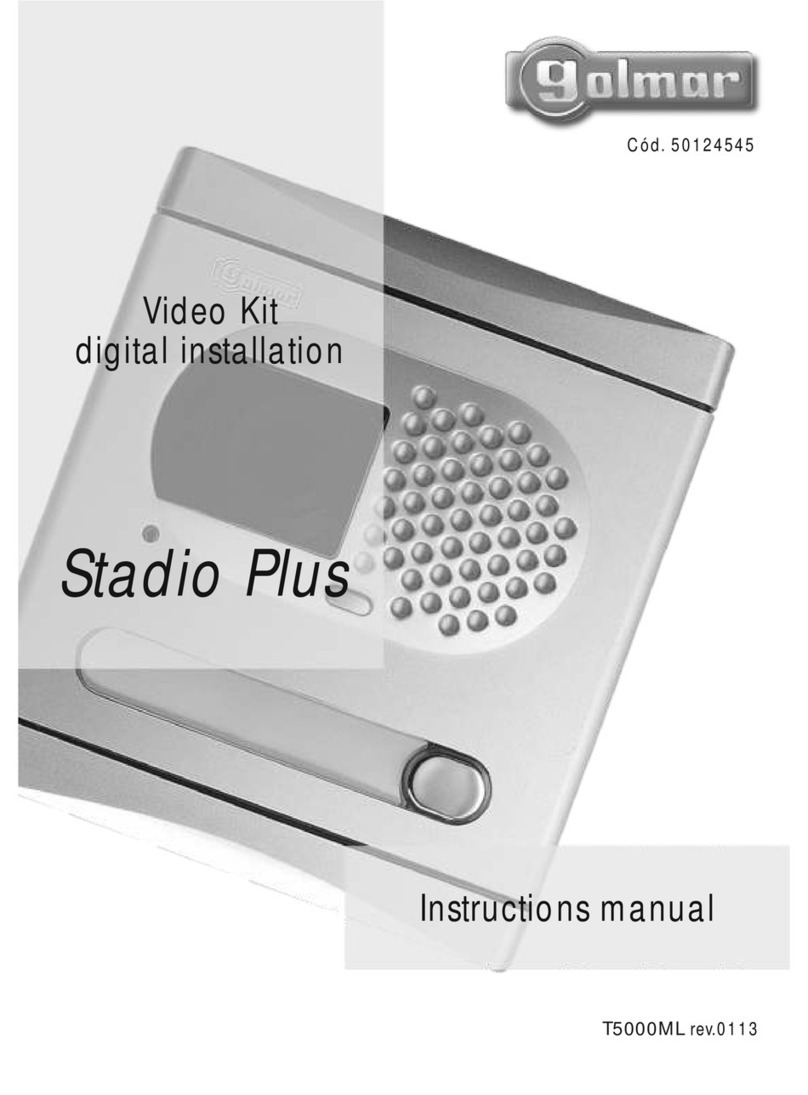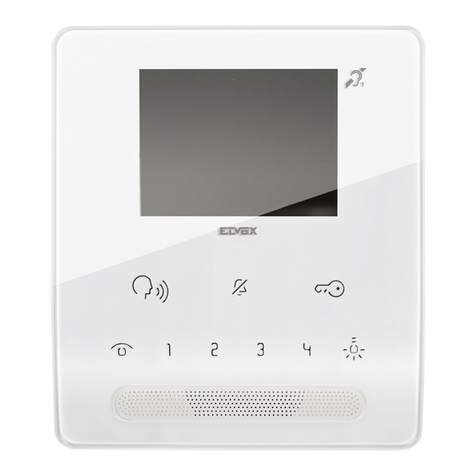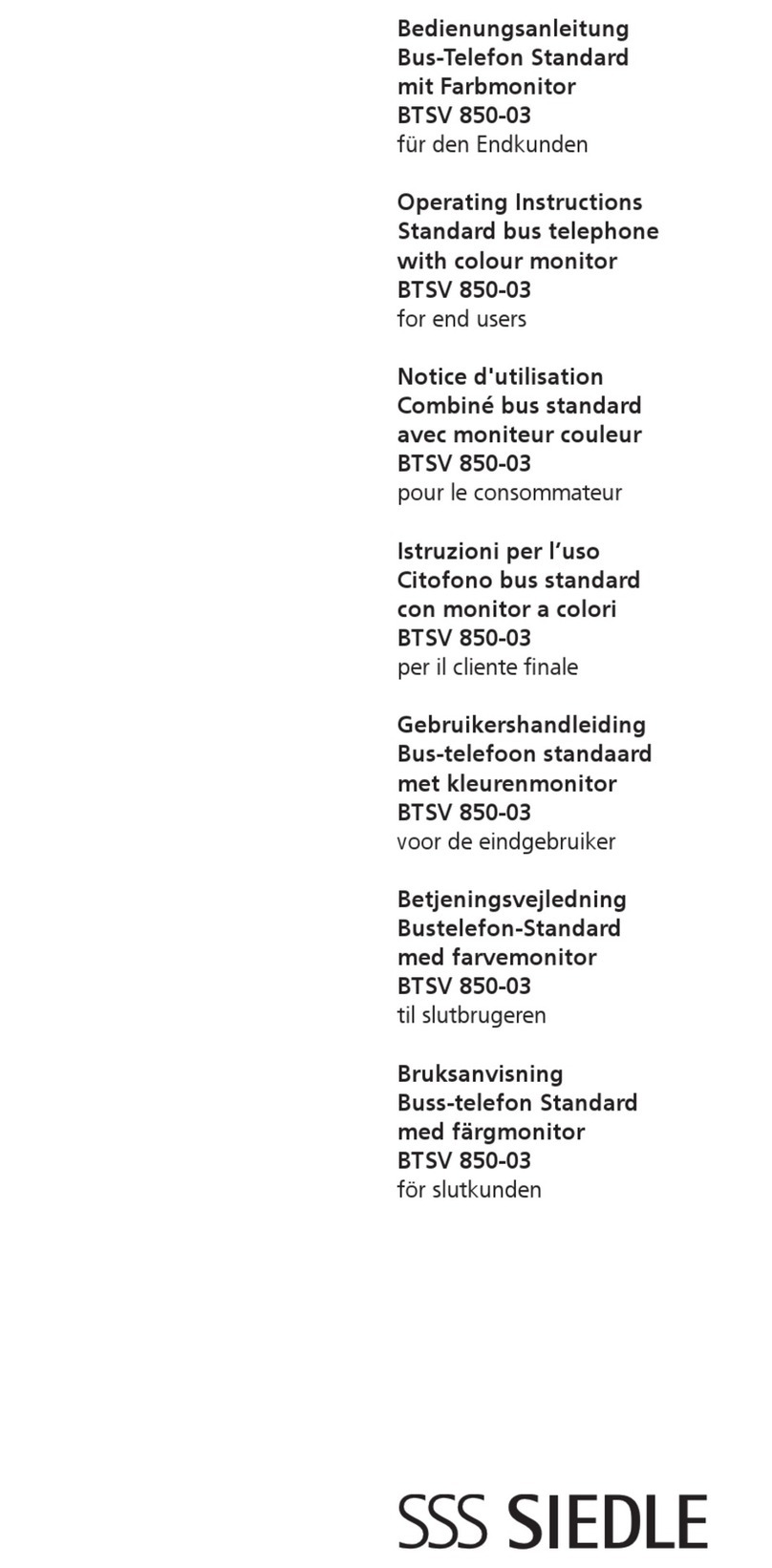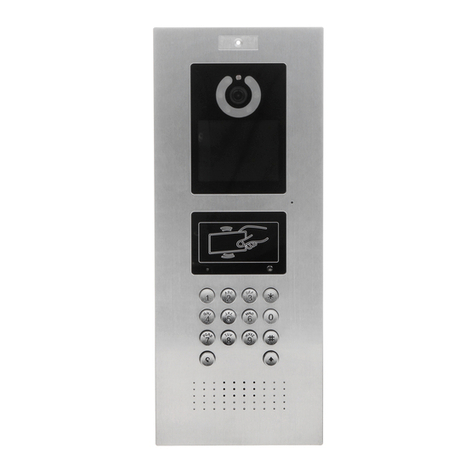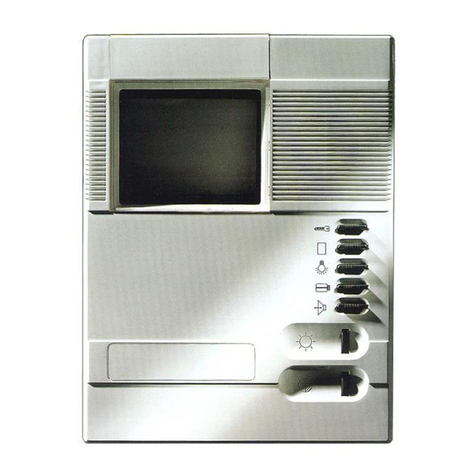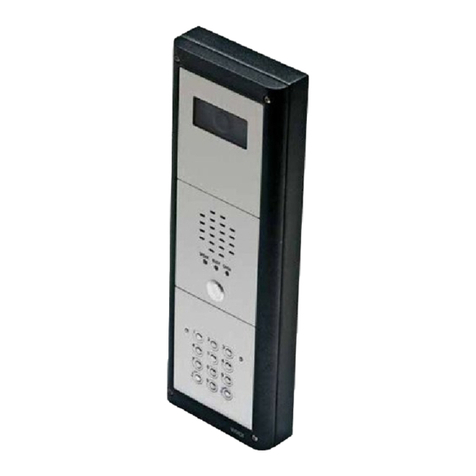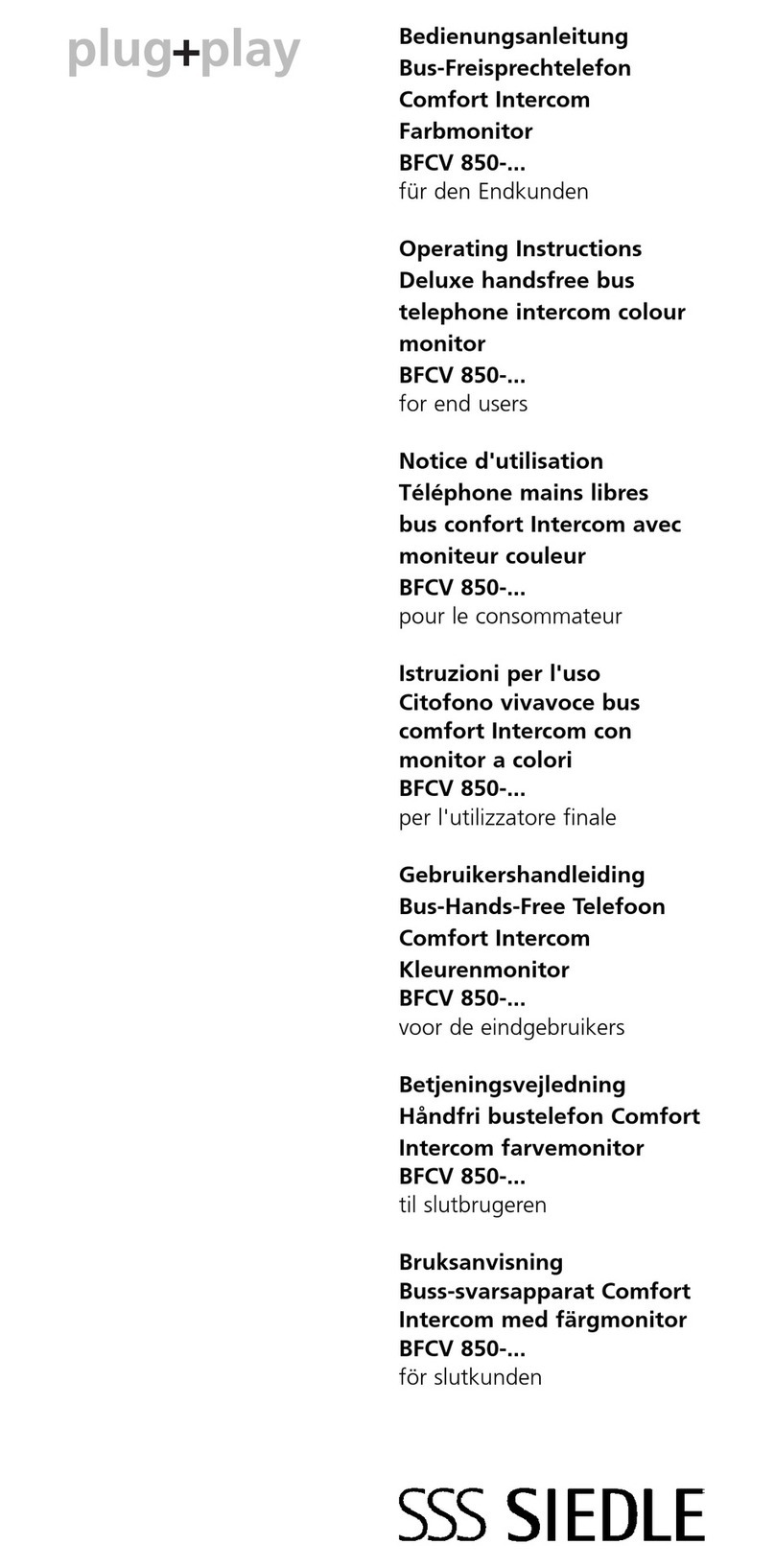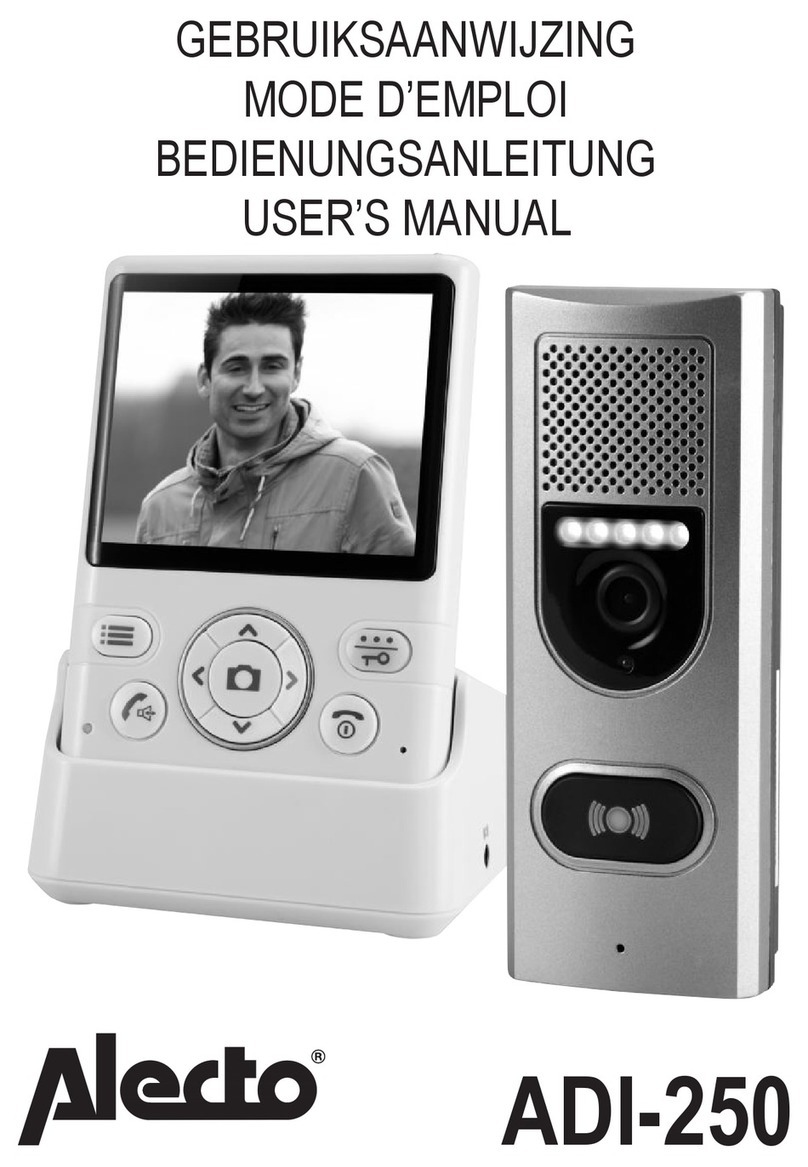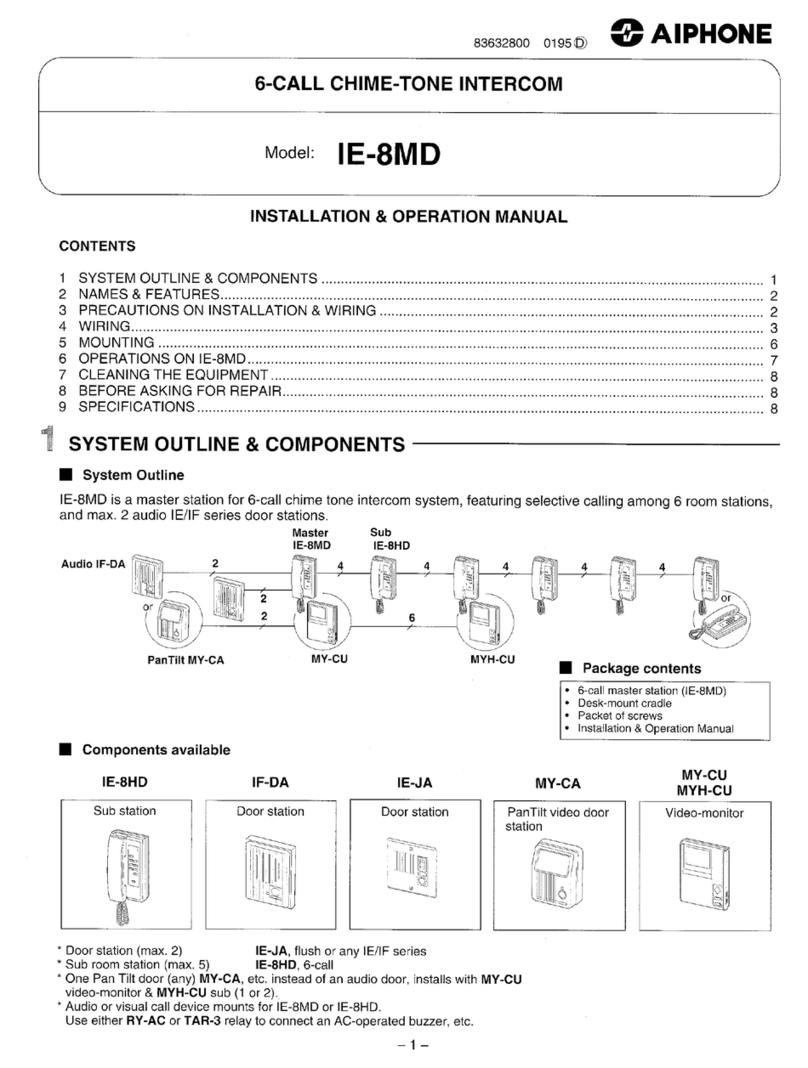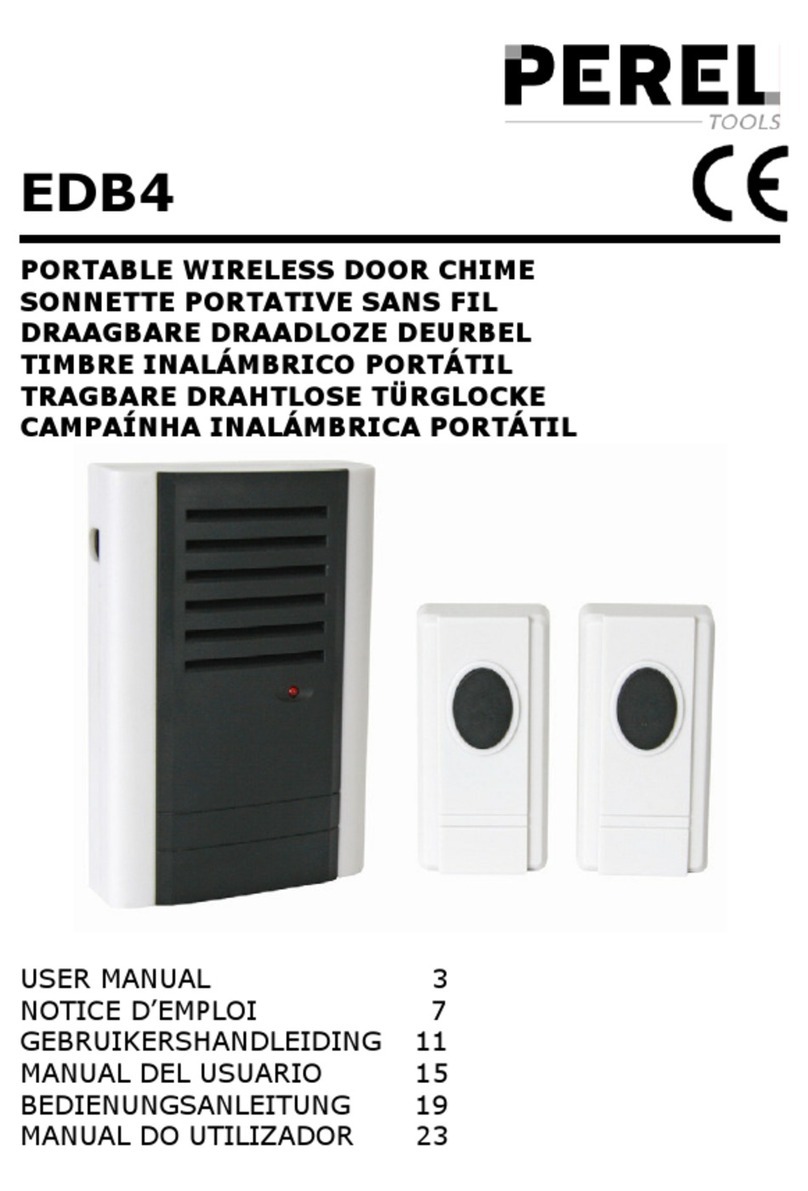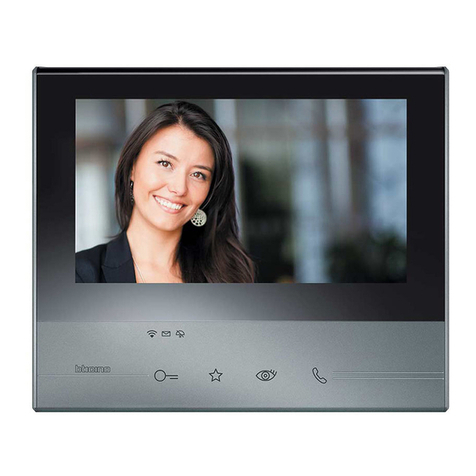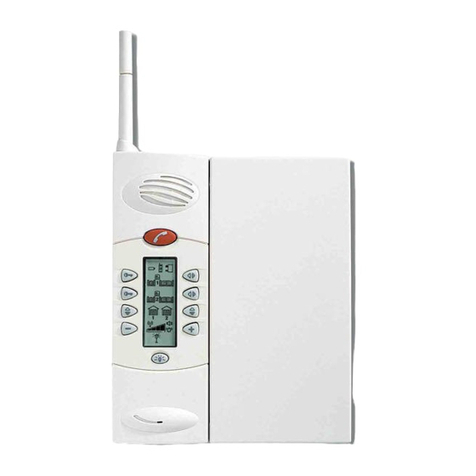
Page 3
The P series reader is constantly transmitting the address of the interface it is connected to.
When the hands free token comes in range, it wakes up and transmits its card number to the
interface just identied. This ensures that it
only communicates with the correct interface
board, allowing several interface boards to
be placed within range of each other.
The token then shuts down for two seconds
to stop repeated transmissions and preserve
battery life. After this two second period,
the token checks to see if it is still in the
same eld. If so, it shuts down and checks
again two seconds later. If it nds no eld,
it shuts down completely until woken again
by a fresh transmission from a reader.
NOTE: After a good read, you must take the
token away from the reader’s eld before
you can repeat a test at the same door.
The hands free system increases the effective read range of a standard Paxton P or KP series
reader to a maximum of 2.5 metres.
The system comprises of a hands free interface, a compatible reader (see read range table) and
hands free tokens (keycard or keyfob). The system operates by using the eld being transmitted
by the P series reader. This wakes up the token which then communicates with the interface. The
interface contains a long range receiver aerial.
Existing P and KP readers can be used without modication. The hands free interface takes its
P series reader
Hands free keyfob
Switch2 control unit
Hands free interface
Net2 control unit
Hands free keycard
.
.
Green
White/Green 1
Screen or spare cores from
network cable
White/Orange 3
Orange 4
KR 1redae dapye 1
R le ay 2 R le ay 1
Keypad 2 Reader 2
stupnI P ewo r
CA nidocelbac5T g
krowteN
Net2 classic
2
Red 12V dc
Red LED
Amber LED
Green LED
Data/D0
Clock/D1
Media Detect
0V out
Load
Data
Clock
R cdV21de
R DELde
DELrebmA
DELneerG
0D/ataD
1D/kcolC
tc
e
t
e
D
aid
e
M
tuoV0
daoL
ataD
kcolC
PSU
F:noituaC ro ylnosredaerc.dV21 . F tcerrocro
noitcennoc fo fersre
d
aerV5dlo re ot
sn
oitcurtsni
PLACE SERIAL
NUMBER
LABEL HERE
http://paxton.info/107
123456
Overview
power from the control unit and therefore does not require a power supply.
Hands free tokens also include a standard PROXIMITY ID chip and can therefore be presented to
any compatible proximity reader whether they are using the hands free interface or not.
AN1082 - Hands free - How does it work?
